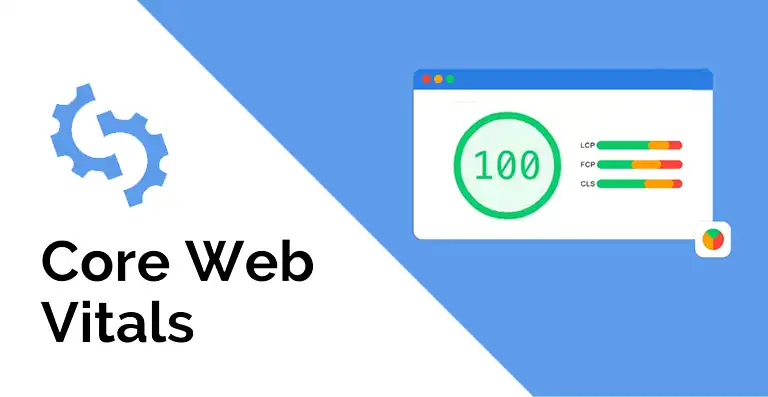In today’s rapidly evolving digital landscape, establishing a thriving e-commerce presence is no longer a matter of simply having a website and a few products to sell. It requires a multifaceted approach that leverages both online and offline marketing strategies. Crafting a comprehensive marketing strategy serves as the foundation for driving traffic, fostering engagement, and ultimately propelling your online business to new heights. In this comprehensive guide, we will embark on a journey into the world of effective marketing, exploring how it can transform your e-commerce venture into a resounding success story.
Online Marketing: The Digital Landscape
Search Engine Optimization (SEO): The Linchpin of Online Visibility
Search Engine Optimization (SEO) is the cornerstone of online visibility. In a world where search engines like Google serve as the gateway to the internet, optimizing your website to rank higher in organic search results is essential. This process involves meticulous attention to various elements of your website, including:
Keyword Research: Thorough keyword research is the foundation of SEO. It involves identifying the keywords and phrases potential customers use when searching for products or services in your niche.
Meta Tag Optimization: Crafting compelling meta tags, including titles and descriptions, is crucial. These tags not only improve click-through rates but also provide valuable information to search engines.
High-Quality Content: Creating high-quality, user-centric content is at the core of SEO. Engaging blog posts, informative articles, and captivating videos are magnets for organic traffic.
Content Marketing: Crafting Authority in Your Niche
Content marketing revolves around establishing authority within your niche. By providing valuable, engaging content, you can captivate your audience and draw organic traffic to your website. Key elements of content marketing include:
Blogging: Maintaining an informative and engaging blog can help position your brand as an industry authority. Share insights, tips, and industry news to keep your audience engaged.
Informative Articles: In-depth articles that address common questions, challenges, or topics of interest to your audience can drive organic traffic and establish your expertise.
Engaging Videos: Video content is increasingly popular. Create informative and visually appealing videos that showcase your products, provide tutorials, or share valuable insights.
Social Media Marketing: Leveraging Social Reach
Social media platforms offer an expansive reach. Leveraging this potential allows you to connect with your audience, build brand awareness, and strategically promote your products. Social media marketing strategies include:
Paid Advertising: Platforms like Facebook and Instagram offer powerful advertising options. Craft targeted campaigns to reach specific demographics and maximize your return on investment (ROI).
Engaging Content: Shareable and compelling content is key. Regularly update your social media profiles with content that resonates with your audience.
Community Building: Actively engage with your followers. Respond to comments, answer questions, and build a community around your brand.
Pay-Per-Click (PPC) Advertising: The Power of Paid Promotion
PPC advertising is a potent tool in the digital marketing toolbox. Platforms like Google Ads allow you to create highly targeted advertising campaigns that drive traffic and conversions. Key considerations for successful PPC advertising include:
Keyword Research: Just like with SEO, keyword research is vital for PPC campaigns. Choose relevant keywords that align with your products or services.
Ad Copy: Craft compelling ad copy that not only attracts clicks but also converts visitors into customers.
Budget Management: Carefully manage your advertising budget to ensure you achieve a positive ROI. Regularly analyze the performance of your campaigns and adjust as needed.
Email Marketing: Building Relationships through Inboxes
Email marketing remains one of the most effective ways to connect with your audience. By cultivating and nurturing an email list, you can execute personalized marketing campaigns. These campaigns may include:
Tailored Product Recommendations: Analyze customer preferences and behaviors to provide personalized product recommendations.
Promotions: Send exclusive promotions and discounts to your subscribers, enticing them to make purchases.
Informative Newsletters: Keep your audience informed about industry trends, product updates, and relevant news.
Influencer Marketing: Broadening Horizons through Influence
Influencer marketing is a strategy that involves collaborating with individuals who have a substantial following and influence within your industry. These influencers can help extend your reach and cultivate trust among potential customers. Key steps in influencer marketing include:
Identifying Influencers: Research and identify influencers who align with your brand and target audience.
Building Relationships: Establish genuine relationships with influencers. Communicate your brand’s values and goals.
Collaboration: Collaborate on content or campaigns that authentically showcase your products or services.
Affiliate Marketing: Empowering Partners for Mutual Benefit
Affiliate marketing is a partnership-driven strategy where you incentivize partners to actively promote your products. Partners earn commissions on sales they drive to your website, boosting sales and enhancing brand visibility. Key aspects of affiliate marketing include:
Program Setup: Establish an affiliate program that outlines commission structures and rules for partners.
Recruitment: Attract partners who can effectively promote your products to their audience.
Monitoring and Management: Continuously monitor affiliate activities and manage partner relationships.
Offline Marketing: The Power of Tangibility
While digital marketing dominates the e-commerce landscape, offline marketing strategies can provide a unique advantage, especially when targeting local or regional audiences. Let’s explore some offline marketing tactics that can complement your online efforts.
Print Media: Traditional Tactics with Modern Impact
Print materials like flyers, brochures, and catalogs remain effective tools for promoting your products, especially at local events and trade shows. A well-designed print piece can leave a lasting impression and drive potential customers to your website.
Radio Advertising: Tapping into Local Audiences
Radio advertising is a valuable channel for reaching local or regional audiences. If your target demographic regularly listens to specific radio stations, crafting radio ads that resonate with them can be highly effective.
Local Events and Sponsorships: A Physical Presence That Speaks Volumes
Participating in local events, trade shows, and sponsorships can enhance brand recognition and provide opportunities for face-to-face connections with potential customers. These events allow you to showcase your products and create memorable interactions.
Direct Mail: The Personal Touch of Mailers
Direct mail campaigns offer a tangible way to engage your target audience. Personalize your mailers or postcards, offering exclusive promotions or discounts to entice recipients and drive online sales.
Networking: Building Bridges for Business
Networking within your industry is a valuable offline strategy. By attending industry-related events, you can expand your professional network, forge connections with potential customers, partners, and suppliers, and open doors for future collaborations.
Measurement and Analysis: The Compass for Optimization
Regardless of whether your marketing efforts are online or offline, data-driven insights are crucial. Regularly monitor and analyze the effectiveness of your marketing strategies using a variety of analytics tools. These insights serve as the compass guiding adjustments and refinements to your strategies, optimizing return on investment and propelling you closer to your e-commerce objectives.
Elevating Your E-commerce Potential
While mastering the art of multifaceted marketing is essential, it’s only the beginning. To fully unlock your e-commerce website’s potential, consider these additional tips, each crucial for ensuring your success:
1. User-Friendly Design: Navigational Ease
Simplify website navigation, streamline product searches, and create an intuitive checkout process. An effortless user experience can be the differentiating factor for online shoppers.
2. Mobile Optimization: Catering to Mobile Users
In an age where smartphones and tablets reign supreme, make your website responsive to cater to this significant portion of online shoppers.
3. High-Quality Product Images: Visual Appeal
High-resolution product images presented from multiple angles empower customers to make informed purchasing decisions.
4. Detailed Product Descriptions: Informative Clarity
Provide comprehensive product descriptions, including specifications, features, and benefits, to address customer queries comprehensively.
5. Fast Loading Speed: Speed Matters
Optimize your website’s speed to reduce bounce rates and enhance the overall user experience. Techniques such as image compression and efficient coding practices can work wonders.
6. Secure Checkout Process: Trust Assurance
Implement robust security measures, including SSL certificates, to safeguard customer data during the checkout process.
7. Multiple Payment Options: Varied Payment Preferences
Accommodate diverse payment preferences by offering a range of methods, from credit cards to digital wallets and alternative payment gateways.
8. Customer Reviews and Ratings: Building Trust
Enable customer reviews and ratings to instill trust and empower shoppers to make informed choices.
9. Clear Return and Refund Policy: Transparent Assurance
Communicate a transparent return and refund policy to alleviate customer concerns and encourage purchases.
10. Efficient Search Functionality: Streamlined Product Discovery
Implement a powerful search feature with filters to assist users in quickly finding products within your extensive inventory.
11. Optimized Product Pages: SEO Prowess
Ensure each product page is meticulously optimized for SEO, encompassing relevant keywords, meta tags, and product titles.
12. Easy Shopping Cart Access: Cart Visibility
Make the shopping cart easily accessible and prominently display the number of items in the cart.
13. Clear Contact Information: Accessibility Matters
Display contact details prominently, including a physical address and customer service hours.
14. Regularly Updated Content: Engagement through Freshness
Publish relevant and up-to-date content, such as blog posts and articles, to keep customers engaged and informed.
15. Security and Trust Badges: Building Trust
Display security badges and trust symbols to assure customers of your website’s safety and legitimacy.
16. Analytics and Data Monitoring: Data-Driven Decisions
Harness analytics tools to track website performance, customer behavior, and sales data. Use this data to guide optimization efforts.
17. A/B Testing: Refinement through Testing
Conduct A/B testing to fine-tune website elements such as product pages, CTAs, and checkout processes for improved conversion rates.
18. SEO Optimization: Continuous Enhancement
Continuously optimize your website to improve its visibility in search engine results, attracting more visitors.
19. Inventory Management: Efficient Stock Control
Implement a robust inventory management system to ensure accurate stock levels, minimize overselling, and prevent backorders.
20. Shipping and Delivery Options: Customer-Centric Choices
Offer a range of shipping methods, including express and international options, and provide accurate delivery time estimates.
21. Feedback and Improvement: Listening to the Customer
Actively seek feedback from customers and use it to make improvements to your website, products, and services.
22. Community and Loyalty Programs: Building Loyalty
Build a loyal customer base by offering rewards, discounts, and exclusive promotions to repeat shoppers.
23. Legal Compliance: Adherence to Regulations
Ensure your e-commerce website complies with all relevant laws, including data protection and consumer rights regulations.
24. Regular Updates and Maintenance: Staying Current
Keep your website up-to-date with the latest software updates, security patches, and bug fixes to maintain functionality and security.
25. Continuous Learning: Industry Awareness
Stay informed about e-commerce trends, emerging technologies, and industry best practices to adapt and thrive.
26. Competitor Analysis: Monitoring the Competition
Continuously monitor competitors’ websites and strategies to identify opportunities and remain competitive within your niche.
By embracing these strategies and recognizing the pivotal role of marketing, your e-commerce website is primed for success in a competitive online landscape. Success hinges not only on the strength of your products but also on your ability to effectively connect with your target audience, engage them, and offer a seamless and satisfying shopping experience. Whether through the digital realm or tangible interactions, your journey towards e-commerce success begins with mastering the art of multifaceted marketing.
Conclusion:
In the ever-evolving world of e-commerce, one fundamental truth stands out: no matter how beautiful your website, how fast it loads, how impeccable your code quality, how captivating your product images, or how exceptional your products or services may be, financial success remains elusive unless you bring visitors to your site. The era of relying solely on SEO and organic discovery is long gone. To ensure success, you must actively market your site to the right audience—the potential buyers—and make your presence known.
Consider this scenario: You’re selling a unique 100% plant-based dog shampoo that’s gentle on a dog’s skin, never stripping its natural oils. It’s a valuable product that has the potential to resonate with pet owners who care about their furry friends’ well-being. You could invest $5,000 to improve core web vitals, another $2,000 for on-page SEO, $5,000 for off-page SEO, and an additional $500 to enhance loading speed to make your e-commerce site as perfect as possible.
Now, let’s say you have an alternative approach. Instead of pouring $12,500 into these improvements, you decide to spend a mere $50. Yes, just $50! You visit an office supply store, print 250 leaflets promoting your exceptional dog shampoo and e-commerce site, and strategically distribute them in your town, particularly near the local veterinarian’s office.
Here’s the reality check: The $12,500 investment in technical enhancements might make your website run like a well-oiled machine, but it won’t guarantee customers or sales. On the other hand, that humble $50 spent on leaflets can put your product directly into the hands of pet owners who are actively seeking such a solution. The personal touch of a leaflet combined with the endorsement of a local veterinarian can be a game-changer.
So, what’s the likely outcome of these two approaches? It’s time to think critically. Will you get more results from the $12,500 investment or the $50 one? It’s a question that encapsulates a valuable lesson: don’t be fooled by the allure of expensive technical improvements and extravagant promises.
Here’s our advice: Before you splurge on costly enhancements, think about your target audience and how to reach them effectively. Sometimes, a small, well-targeted effort can yield more tangible results than a large investment in technical perfection. In the world of e-commerce, it’s not just about how good your website looks; it’s about connecting with your audience and offering them something they truly value. So, think, think, and think again—your e-commerce success may depend on it.



